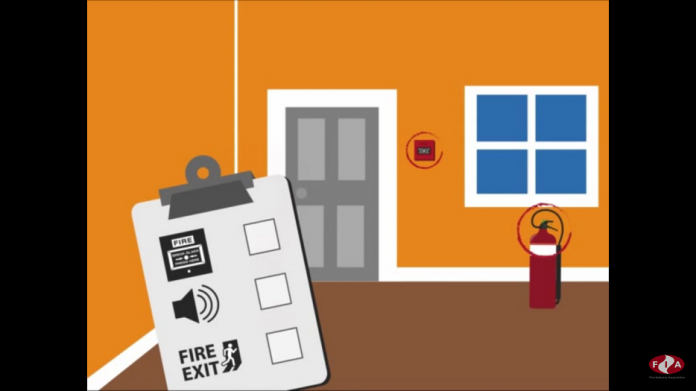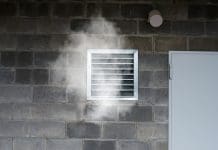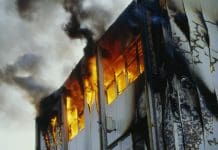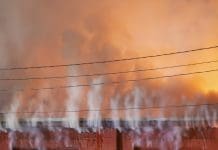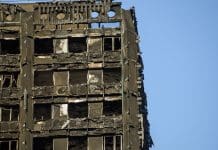Fire safety is imperative to protect buildings and their occupants from danger. Here, the Fire Industry Association outlines the Fire Safety Order
Fire safety is paramount in all buildings. The Fire Safety Order is actually called the Regulatory Reform (Fire Safety) Order 2005, and it is the piece of legislation that covers fire safety within England and Wales. Scotland and Northern Ireland have their own legislation regarding fire safety – the Fire (Scotland) Act 2005, in combination with the Fire Safety (Scotland) Regulations 2006, and the Fire and Rescue Services (Northern Ireland) Order 2006, and the Fire Safety Regulations (Northern Ireland) 2010 respectively.
Enforcement of this piece of legislation is paramount – it protects buildings and the people inside them from the dangers of fire by setting out what steps should be taken to reduce the risk. Steps such as carrying out a fire risk assessment to assess the levels of hazards and risks within a building, and stating who can carry out any of these tasks relating to fire safety.
However, many people still do not understand their responsibilities as defined by the legislation, which is a possible reason why there are still regular reports of breaches of fire safety in the news every week. Better education in the responsibilities towards fire safety will lead to safer communities for all.
Who does the Regulatory Reform (Fire Safety) Order apply to?
The RRFSO 2005 applies whether the business employs 5 or 5000 people – the size does not exclude them from the legislation. It applies whether the company is a large, well-known brand or a small self-employed family business. The premises could be a charity or not-for-profit, or a business focussed on profit, whether that is an office, a shop, a museum, or any other building accessed by the public. Whatever the nature of the premises – if the building is not a private residence, then the Order applies. The Order also applies to the communal areas of multiple occupancy residences or blocks of flats.
The legislation applies directly to anyone and everyone that owns or is responsible for non-domestic premises. This person is called the ‘Responsible Person’ in England and Wales, but the term ‘Duty Holder’ and ‘Appropriate Person’ is used in Scotland and Northern Ireland respectively, but they mean the same thing. In the case of a business, it is almost always the employer. In a public building such as a school or hospital, it could be the trust, academy chain, or local authority.
So when it comes to breaching fire safety law, there are millions of people that can be held responsible for their actions (or lack thereof) to protect people from fire. These people all need to have a good understanding of how the law applies to their business or premises so that they can create a safe environment for themselves and all of the people within their buildings – whether they are employees, customers, visitors, patrons, residents, schoolchildren, or patients.
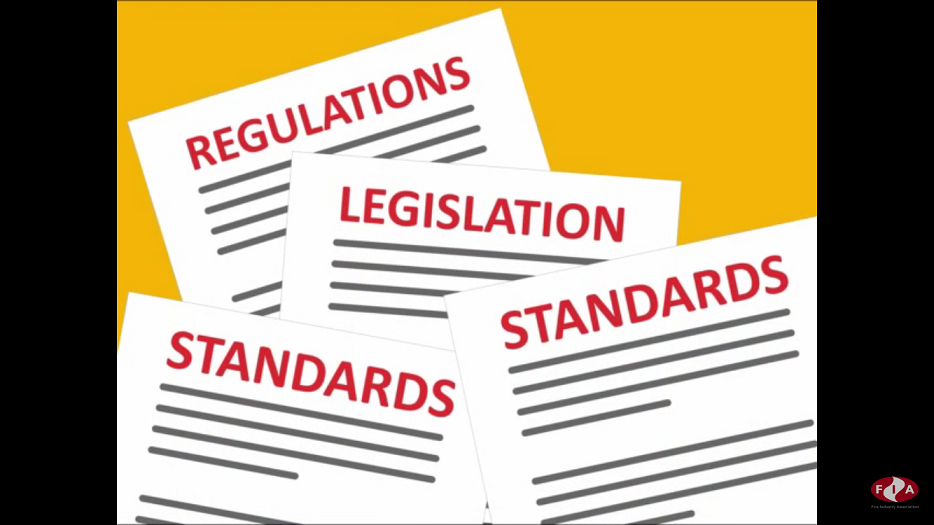
How is the order enforced?
Fire safety legislation is enforced by Fire Safety Enforcement Officers from the local Fire and Rescue Service. They can enter any workplace at any suitable hour, without giving notice, though notice may be given when the inspector thinks it is appropriate. The EO will then conduct an inspection to check out the workplace, the work activities, the management of fire safety, and audit the Responsible Person’s fire risk assessment to ensure that they are fulfilling their duties on fire safety law. The EO may offer assistance or advice to help, but they may also talk to employees or their representatives, take photographs, serve notices, or take action if there is a risk to fire safety that needs to be dealt with straight away.
The problem is that there is a huge lack of understanding of the law by Responsible Persons and how it is enforced. Whether this is down to a lack of education on the implications, or simply a reluctance to find out about fire safety law is only conjecture – but what is surmisable is that breaches of fire safety law happen regularly.
In November of 2016 alone, twelve cases of prosecutions or fines for failing to comply with the Regulatory Reform (Fire Safety) Order 2005 were brought to the attention of the Fire Industry Association when they were reported in the news and were published on the Association’s website. Twelve offences in one month may not sound like many, but the effects of a fire can be both lasting and devastating for businesses and on people’s lives. These twelve cases are only the ones that were reported on by local and national press that reached the newsdesk of the FIA this month alone. Imagine how many more there might be that are happening nationwide, and the horrendous and wide-ranging devastation that may be occurring due to a lack of fire safety precautions.
Perhaps one of the most memorable cases of breaches of fire safety legislation is one that saw a fine of £400,000, which is the largest ever recorded. In 2007, a clothing giant on Oxford Street, London was charged with two breaches of fire safety legislation. Reports at the time suggested that staff did not have sufficient training to be able to evacuate shoppers of the clothing retailing store and that escape routes were blocked. Perhaps more devastatingly, these factors were only discovered during a fire that destroyed the store and shut down much of London’s biggest shopping area: essentially disrupting businesses in the area, and dangerous for the estimated half a million shoppers per day that visit.
More recently, a wood recycling centre was fined £70,000 and ordered to pay another £71,000 in costs for breaches of fire safety legislation after it disregarded advice given by the local fire and rescue services. In this case, a fire burnt for an incredible sixteen days, costing Cleveland Fire Brigade £235,000 to tackle the fire.
There are hundreds more cases where devastation by fire is rife.
But there is a way to ensure that all responsible persons are aware of their responsibilities: education. Getting people interested in fire safety and helping them to learn about the legislation is a necessary step towards a future where devastating incidents are greatly reduced.
Fire protection is not a subject to be taken lightly – fires can destroy lives, ruin businesses, disrupt services in the vicinity, and release dangerous chemicals into the environment. The effects can be lifelong.
In light of this problem, the Fire Industry Association has created a short video to explain to all Responsible Persons what their responsibilities are and what steps they need to take to protect themselves from fire and comply with fire safety legislation.
The video, developed by a team of fire safety experts from across the fire safety industry, took almost a year to create and release and delivers fire safety information for Responsible Persons in a clear and concise manner.
Fire Industry Association (FIA)
Tel: +44 (0)203 166 5002
info@fia.uk.com


